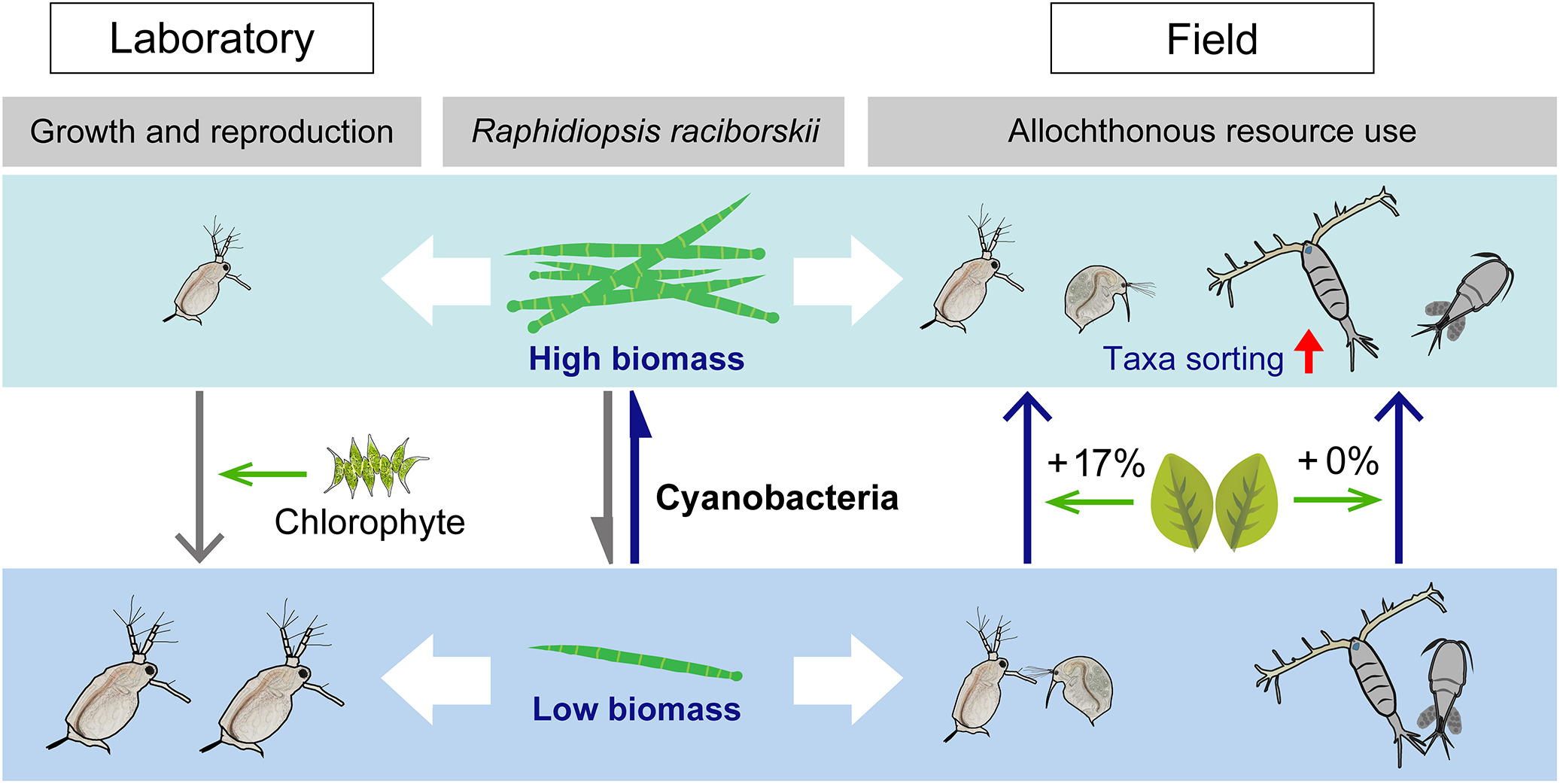

Cyanobacterial dominance or blooms can influence ecosystem structure in reservoirs, yet there are only few studies of its effect on the resource use and trophic structure of zooplankton. We hypothesised that zooplankton traits would exhibit a strong response to the increase of invasive and toxic cyanobacteria. We investigated the effect of an invasive bloom-forming cyanobacterium Raphidiopsis raciborskii (formerly Cylindrospermopsis raciborskii) on zooplankton functional traits (e.g., growth, reproduction, allochthonous resource use and realised niche) through laboratory experiments and 3-year field investigations in two subtropical reservoirs. The realised niche (i.e., resource and habitat use) was quantified using stable isotopes (termed isotopic niches). We fed the cladoceran zooplankton Moina sp. with Scenedesmus obliquus (chlorophyte), R. raciborskii, and a mixture of S. obliquus and R. raciborskii in laboratory experiments. A diet of R. raciborskii alone depressed the growth and reproduction of Moina sp. compared to a diet of S. obliquus alone, but a mixture of S. obliquus and R. raciborskii greatly alleviated the inhibition effects caused by cyanobacteria. Under natural field conditions, we did not find a strong inhibition effect of R. raciborskii dominance on the zooplankton, but a high biomass of R. raciborskii was associated with an increase (17%) in the relative allochthonous resource (terrestrially derived organic matter) use by cladocerans (but not for copepods), even though the chlorophyll-a concentration increased from 17 μg/L in the non-bloom period to 28 μg/L during periods of R. raciborskii dominance or blooms. Furthermore, a high biomass of R. raciborskii increased the contribution of inter-taxa variation (taxa sorting) to the expanded isotopic niches of the zooplankton community. Our study helps to clarify cyanobacteria-zooplankton interactions and highlights the importance of cyanobacterial dominance or blooms in regulating cross-ecosystem resource use and biogeochemical cycling mediated by zooplankton in aquatic ecosystems.
